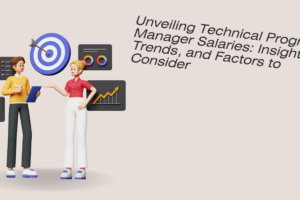
Agile vs. Waterfall: Choosing the Right Approach for Your Technical Program
Introduction
When it comes to managing technical programs, choosing the right approach can make all the difference in the success of your project. Two popular methodologies that often come up in this context are Agile and Waterfall. In this article, we will explore the pros and cons of both approaches, helping you understand when to use each one.
Agile Methodology
Agile methodology is an iterative and incremental approach to project management. It focuses on flexibility, collaboration, and delivering value to the customer in shorter timeframes. Here are some key advantages of using Agile for your technical program:
- Flexibility: Agile allows for changes and adjustments to be easily incorporated throughout the project lifecycle. This is particularly useful when requirements are likely to evolve or when there is a need for quick adaptation.
- Collaboration: Agile promotes close collaboration between team members, stakeholders, and customers. This fosters better communication, feedback, and alignment, leading to improved outcomes.
- Customer Satisfaction: By delivering working software in shorter iterations, Agile ensures that customer needs are met more effectively. This leads to higher customer satisfaction and a better end product.
However, Agile also has its limitations:
- Uncertainty: The flexibility of Agile can sometimes lead to uncertainty, especially when it comes to budgeting and timelines. It requires a high level of adaptability and may not be suitable for projects with strict deadlines or fixed budgets.
- Dependency on Team Collaboration: Agile heavily relies on collaboration and teamwork. If team members are not fully committed or if there is a lack of communication, the Agile approach may not yield the desired results.
Waterfall Methodology
The Waterfall methodology is a linear and sequential approach to project management. It follows a structured process where each phase is completed before moving on to the next. Here are some advantages of using Waterfall for your technical program:
- Clarity and Structure: Waterfall provides a clear and well-defined structure, making it easier to plan and manage projects. This is particularly useful when requirements are stable and predictable.
- Documentation: Waterfall emphasizes documentation, ensuring that all project requirements, processes, and deliverables are well-documented. This can be valuable for compliance, audits, and future reference.
- Control: Waterfall allows for better control over budget and timeline, as each phase is completed before moving on to the next. This can be beneficial for projects with fixed deadlines and budgets.
However, Waterfall also has its limitations:
- Less Flexibility: The linear nature of Waterfall makes it less flexible when it comes to incorporating changes or adapting to evolving requirements. This can be a disadvantage in fast-paced environments or projects with uncertain requirements.
- Lack of Customer Involvement: Waterfall typically involves less customer involvement during the development process. This can lead to a disconnect between the final product and customer expectations.
Choosing the Right Approach
Choosing between Agile and Waterfall for your technical program depends on various factors, including project requirements, team dynamics, and customer expectations. Here are some considerations to help you make an informed decision:
- Project Complexity: Agile is often favored for complex projects with evolving requirements, while Waterfall may be more suitable for projects with stable and well-defined requirements.
- Team Collaboration: If your team is highly collaborative and adaptable, Agile can bring out their strengths. However, if your team prefers a structured and sequential approach, Waterfall may be a better fit.
- Customer Involvement: If customer involvement and feedback are critical to the success of your project, Agile’s iterative nature can ensure their needs are met. On the other hand, if customer involvement is limited or not a priority, Waterfall may be sufficient.
Ultimately, there is no one-size-fits-all approach. The decision between Agile and Waterfall should be based on a careful evaluation of your specific project requirements and constraints.
Conclusion
Agile and Waterfall are two popular methodologies for managing technical programs. While Agile offers flexibility, collaboration, and customer satisfaction, Waterfall provides clarity, structure, and control. Choosing the right approach depends on factors such as project complexity, team collaboration, and customer involvement. By considering these factors, you can make an informed decision that aligns with your project’s unique needs. Remember, the key is to choose an approach that maximizes the chances of success for your technical program.



